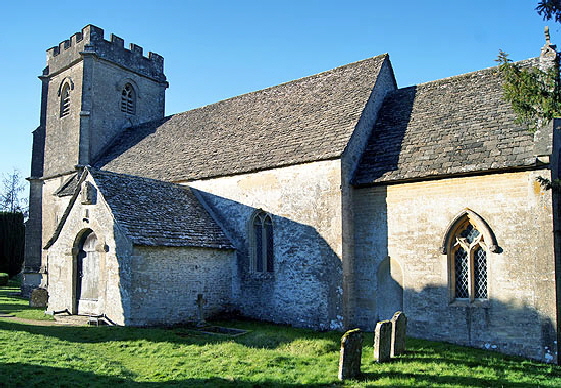|
Alphabetical List |
|
|
|
|
|
|
|
County List and Topics |
|
|
|
Please sign my Guestbook and leave feedback |
|
|
||||||||||||||||||||||
|
replace the Anglo-Saxon one that had been rendered useless! All in all, then, this is a church with a pleasantly ancient feel to it. The treasure though is the collection of four Anglo-Saxon carved panels that are mounted on the walls. They are believed to be tenth century and nobody knows who carved them and why. Astonishingly, three of them were discovered when the chancel arch was rebuilt in 1850. The stones were being used as jambs for the arch with their images turned inwards so that they were invisible. Commentators have been scathing about these carvings, deploring the poor artistic quality. I can’t argue with that, but the simple piety of the Anglo-Saxon carvers, doing their best without formal training and using the crudest of tools never fails to move me, no matter how childlike the imagery. I don’t think that they were worrying about third millennium art critics at the time. Come to think of it, I’m sure I’m not worried either. If Anglo-Saxon carving is “not your bag” then I suppose this little church is not really worth a detour, but it is charming and only a mile or two from Duntisbourne Abbots and Duntisbourne Rouse and six miles from the wonderful Elkstone. They make a great little mini-tour. |
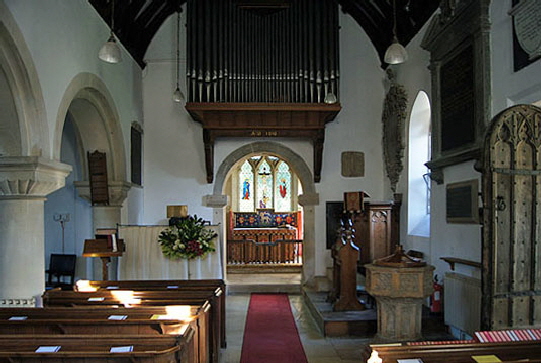 |
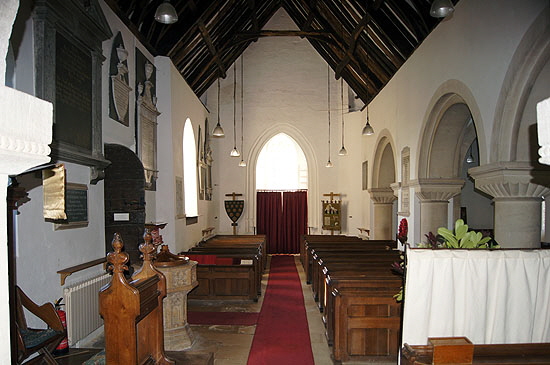 |
||||||||||||||||||||||
|
Left: The view to the east. The chancel arch is Anglo-Saxon but the authentic-looking “Norman” arches of the north aisle are Victorian. To the right of the chancel arch you can see an Anglo-Saxon crucifixion scene. Right: The view to the west. It’s a slightly cluttered scene, made so by the rather unsightly wall-mounted funerary tables on the south wall. |
|||||||||||||||||||||||
 |
 |
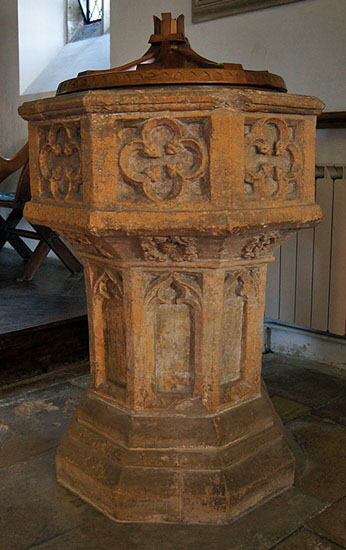 |
|||||||||||||||||||||
|
Left: The south door. It is a pretty simple Amglo-Saxon design with wheat ear decoration on the impost blocks. Centre: The Anglo-Saxon chancel arch. Again, it is simple with just a single course of adornment. The plastering hides the “Escomb-style” jambs of alternate wide and narrow stone blocks. Right: The octagonal font is fifteenth century. Its main faces are unremarkable but the underside has nicely executed carvings of fleurons and a green man. |
|||||||||||||||||||||||
 |
|||||||||||||||||||||||
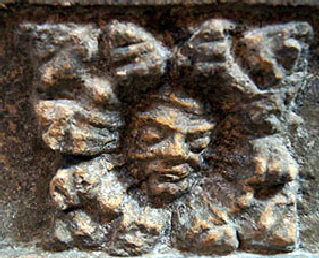 |
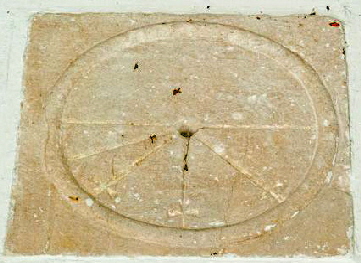 |
||||||||||||||||||||||
|
Left and Centre: Green Man and fleuron inages from the font: Right: The sundial above the south door; rendered useless but protected by the fifteenth century south porch. |
|||||||||||||||||||||||
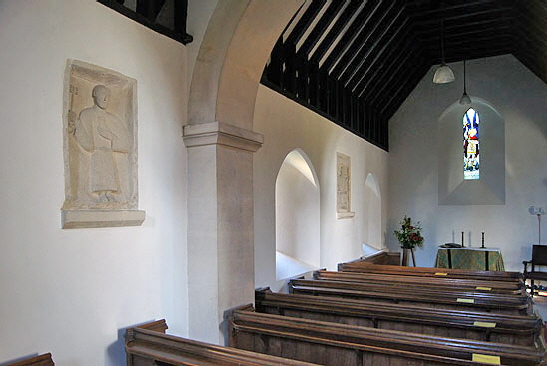 |
|||||||||||||||||||||||
 |
|||||||||||||||||||||||
|
Left: Anglo-Saxon carved panels located in the north aisle wall. The keyholder on the left is, of course, St Peter. Right: The credence table located in the chancel. It is quite an intriguing piece, but not much discussed.. It is supported by two small columns with cushion capitals. They look to be Norman or earlier. Where did they come from? The table itself - a stone mensae was originally in the priest’s quarters above the west end. Was it displaced by the reforms of Archbishop William Laud (1573-1645) who insisted on communion tables placed in the body of the church? |
|||||||||||||||||||||||
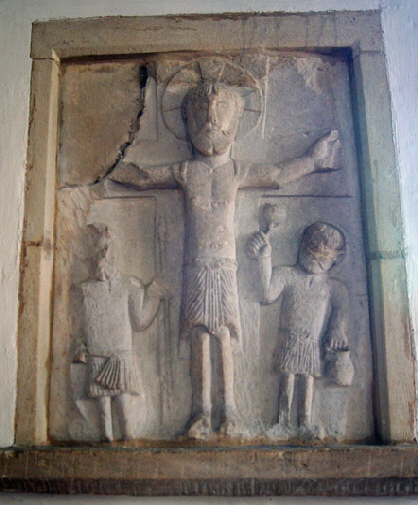 |
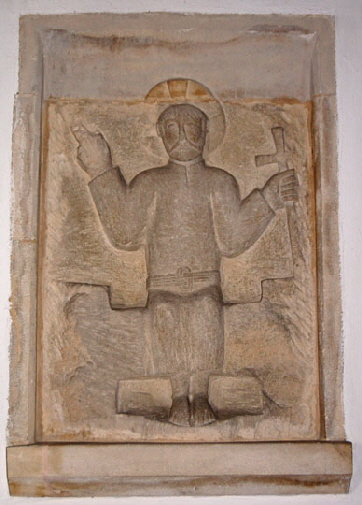 |
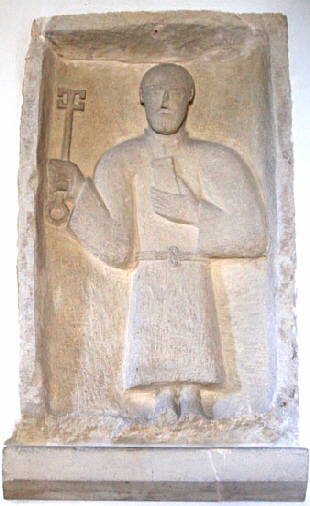 |
|||||||||||||||||||||
|
Daglingworth Church in has an extraordinary collection of four Anglo-Saxon carved plaques mounted on its walls. They are believed to be tenth century and nobody knows who carved them and why. Astonishingly, three of them (above) were discovered when the chancel arch was rebuilt in 1850. The stones were being used as jambs for the arch with their images turned inwards so that they were invisible. Nobody knows whether this was an act of preservation or an act of desecration! They are, however, wonderfully preserved. They represent, from left to right, Christ Crucified, a mustachioed Christ in Majesty and St Peter with the key to the Gates of Heaven. Note how Christ is represented on the cross as a large and dominant figure. The Anglo-Saxons disliked showing Christ as a broken man. The figures either side of Him are Roman soldiers: one (Longinus) with the lance with which he pierced Christ’s side. The other is holding the vinegar-soaked sponge which he used to increase the pain of Christ’s wounds. Note the distinctive looped fastenings on the belts of Christ in Majesty and St Peter. |
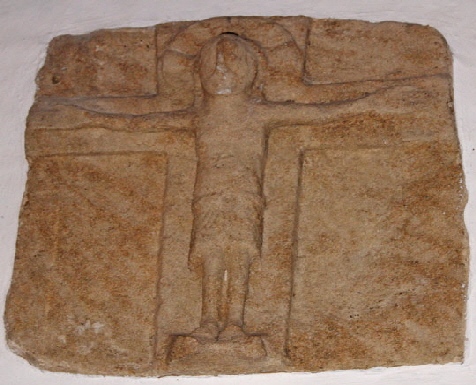 |
||||||||||||||||||
 |
||||||||||||||||||
|
Left: Another figure of Christ crucified now sited to the right of the chancel arch. It was originally on the east gable so it has suffered from weathering Was it by the same carver? The nimbus and the shape of the feet, as well as the pattern on the loincloth suggest to me that it is. The most plausible scenario, in my view, is that all of these stones were displaced at sme time, that this single stone was relocated to the gable and that the others were casually used in the chancel arch jambs jambs because their images were not valued. Right: The north wall of the aisle added in 1850. |
||||||||||||||||||
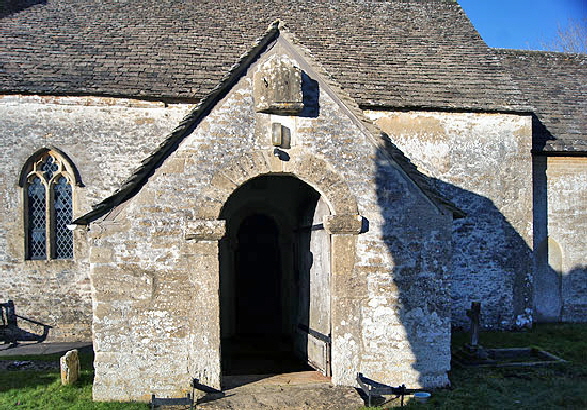 |
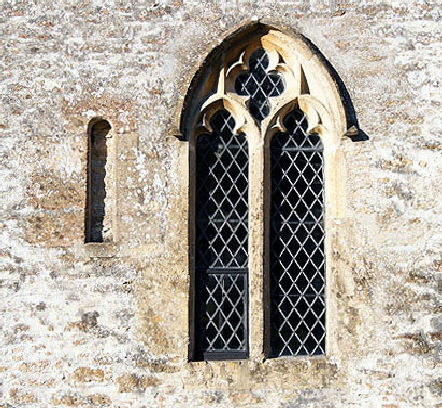 |
|||||||||||||||||
|
Left: The south porch. It has an Anglo-Saxon doorway that was almost certainly moved from the west end where it would have been the main entrance prior to the building of the tower. Note that the sundial that has been hidden inside the church has been replaced by a more “modern” one. Note also a filled-in priest’s door at the left side of the chancel wall. Right: A filled-in window on the south wall, probably of Norman rather than Anglo-Saxon origin, flanks a gothic replacement. |
||||||||||||||||||
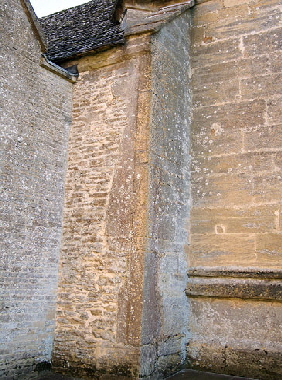 |
||||||||||||||||||
 |
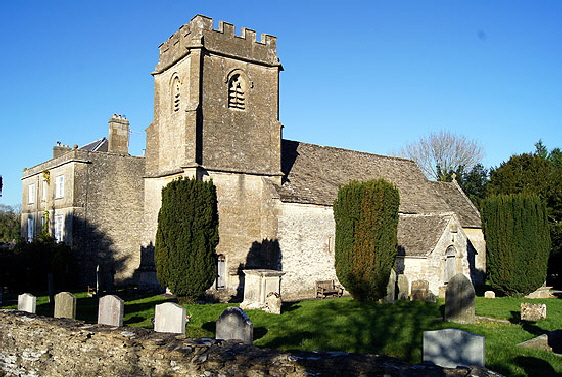 |
|||||||||||||||||
|
Left and Centre: Anglo-Saxon long and short work at the corners of respectively the north west and south west of the Anglo-Saxon nave. As you can see, even photography in sunny weather comes at a price! Right: The church from the south west. |
||||||||||||||||||
|
|
||||||||||||||||||
